“It is not by adaptation to environment, but by the creation of an artificial environment.”
—John Wesley Powell, 1888
In defiance of the prevailing belief that modern insights and innovations are driving humanity down the path of enlightenment, social tensions are ever increasing, and the hoped-for nirvana of peace, happiness, and harmony seems more and more elusive. A thoughtful consideration of our history can help us see the futility of the path modern society has been following, the hopelessness of expecting that it will lead us to the desired goal, and the ultimate damage to well-being that it engenders. This essay examines prevalent nineteenth century attitudes toward the cliff dwellers of the Southwest, the unfortunate outcomes of those mindsets, and how the same underlying beliefs are still at the core of the Great American Dream. It also presents an alternative: an ancient, radically different way of living that is conducive to the most respectable goals of human aspiration.
My own interest in these issues came from my study of my enigmatic ancestors, the Wetherills, who settled in southwestern Colorado in about 1880 and were heavily involved in the archaeology of Mesa Verde and beyond. It was obvious that my family members had a deep admiration of the ancient inhabitants of the region, but I was surprised to learn that most members of the public, government officials, and American scientists were, at best, indifferent toward the cliff dwellers and, at worst, viewed them with disdain. Delving into this dichotomy led me to some interesting insights.
Among the fortune seekers who arrived at the silver fields of Rico, Colorado in 1879 was forty-seven-year-old Benjamin Kite (B. K.) Wetherill, lately of Missouri. Mrs. Marion Wetherill and the children, Richard, Al, Anna, John, Clayton, and Winslow, stayed back in the Midwest for the time being.
When cold weather set in, B. K. migrated down to the warmer Mancos Valley where a friend had a cabin and some farm land. B. K. soon realized that farming was a more reliable source of income than mining and that he had a ready market for produce among those who dug for ore. “Rico will be a good market for everything & things will rule high,” he wrote his son, Richard.
In 1880, B. K. called for Richard to come out to Colorado to help him with the farming. They staked out a 160-acre homestead near the town of Mancos and put in some crops. The next year, conditions were suitable for Marion and the rest of the family to move west. The landscape that confronted the family was harsh by Midwestern standards—mountains, canyons, and rocky outcroppings rather than the soft green hills and well-watered plains they were accustomed to. Nevertheless, they delighted in the ruggedness and primitive character of the land.
Once they were settled, the Wetherills had much work to do. They all pitched in to help build a log house and clear the fields of what was to be famously known as the Alamo Ranch. The brothers quickly learned how to raise crops, wrangle cattle, bust broncos, hunt, fish, and survive in the outdoors with only the barest of comforts. Despite the hard work, they were impressed by nature’s largesse, which was theirs for the taking. “On the fireplace mother cooked us many a feed of venison, trout, wild duck, or turkey and we had wild fruit sauce to go with the meal,” Al recalled. “We could have had Thanksgiving every day if we had cared to look up and shoot the grouse and turkeys.”
To the west of the Alamo Ranch is Mesa Verde. South of that is Mancos Canyon through which the Mancos River flows and which was home to a band of Southern Utes whom most of the settlers disliked. The newcomers believed that they had the right to push the Indians out of the way for the sake of civilization. Unlike their neighbors, the Wetherills welcomed the Utes into their home, gave them food, and cared for their sick. The Utes reciprocated by allowing the Wetherills to use Mancos Canyon for a cattle range.
Shortly after arriving in Mancos, fourteen-year-old John became intrigued by some tumbled-down stone buildings near the ranch. Digging into them, he uncovered ancient clay pots and stone implements that had been left there by the long-departed inhabitants. He wondered who the people were that had built the houses and then moved on. His enthusiasm for that discovery, admiration for the simpler way of life that it represented, and interest in preserving that record was the beginning of a passion for archaeology that the family would share, with far-reaching consequences. “Thus began an eighteen-year self-imposed assignment of excavation and research among the ruins of the Mesa Verde,” Al Wetherill later explained in his autobiography. “It all reverts back, of course, to the fact that no one told us to do it. Any hardships were our own responsibility. But, we could not shake of the feeling that we were possibly predestined to take over the job, knowing what depredations had been committed by transients who neither revered nor cared for the ruins as symbols of the past.”
The ancient dwellings in the region had come to the attention of the public several years earlier. In 1875, photographer William Henry Jackson, artist William Henry Holmes, and other members of the Hayden Survey visited some cliff dwellings on the side of Mesa Verde and wrote of their findings in reports and popular articles. It is revealing that, in the following decades, despite this publicity, government officials took no steps to protect Mesa Verde.
Although the archaeological sites would have been a virgin laboratory for scientific research, the disregard of the nation’s scientists rivaled that of the government leaders. This attitude was explained when a correspondent to the American Journal of Archaeology complained about their lack of coverage of North American topics. One of the editors replied:
Within the limits the United States the native races attained to no high faculty of performance or expression in any field. They had no intellectual life. They have left no remains indicating a probability that, had they been left in undisturbed possession of the continent, they would have succeeded in advancing their condition out of the prehistoric state.
In the 1880s, a new type of prospector began showing up in the area—miners of prehistoric relics who could turn a profit by selling their treasures to burgeoning curio shops and collectors. At the time, there was no law against removing archaeological materials from public lands. The artifacts were valued as objects, and the entrepreneurs expressed little interest in learning about the people who had made them or keeping the collections intact. Some of them had no regard for preserving the structures in which the relics were found and no remorse against reducing centuries-old masonry walls to piles of rubble in order to efficiently extract the goods.
During the winters, when farm duties were light, some of the Wetherill brothers would migrate into Mancos Canyon with the cattle and set up camp until spring. In their wanderings, they noticed an unusual concentration of archaeological sites, including some well-preserved cliff dwellings perched in alcoves under the rim rock of Mesa Verde.
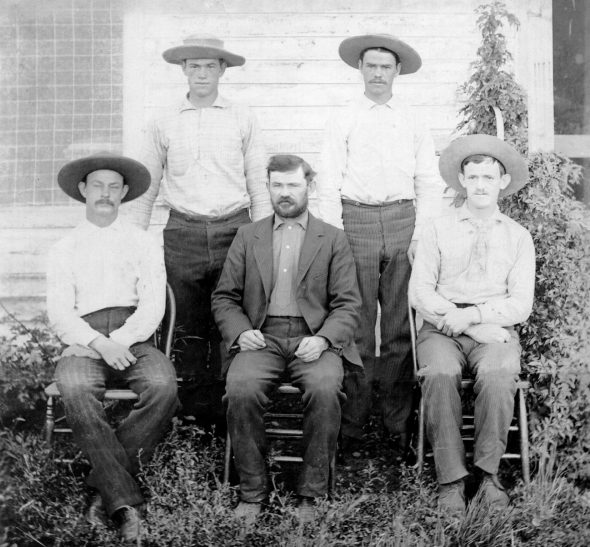
The Wetherill brothers at the Alamo Ranch. Front row, left to right, Al, Richard, and John. Back row, Winslow and Clayton.
On an extended stay in Mancos Canyon with the cattle in 1887, Al found time to explore a small portion of Mesa Verde. As he descended back toward his camp in the bottom of a tributary canyon, he caught a glimpse through the brush of the top of what looked like a cliff city in an alcove above him. He was too tired to investigate it further that day, and he did not find the time to return to the site before he drove the cattle out of the canyon in the spring.
The following winter, when Richard Wetherill and brother-in-law Charlie Mason had the duty of tending the cattle, some of the stock escaped up a route that led to the top of Mesa Verde. The two men rode up to retrieve them and spent several days on the mesa tracking the missing animals and exploring the country. On December 8, 1888, after following a rim for some distance, they peered into the adjacent canyon and saw, to their amazement, a large alcove filled with terraced stone buildings. It was the same one that Al had had glimpsed the winter before and that would become known as Cliff Palace.
The men rode around the head of the canyon and found a route that they were able to negotiate, with difficulty, down the cliff to the level of the buildings. They were struck by the size of the village, its complexity, and the fine quality of its workmanship. The cave contains some 150 rooms stacked, in places, three stories high. A four-level tower dominates the scene, and, at the base level of the cave are twenty-three kivas, which were ceremonial chambers accessed through holes in their roofs.
Richard and Charlie were puzzled that stones had been knocked out of many of the walls and the roof beams removed in what appeared to be an ancient battle. Underneath some of the fallen debris they found specimens of handiwork that looked as if they had been concealed there by the long-departed inhabitants—pottery, baskets, bone awls, sandals, cloth made from turkey feathers, and a stone axe with the handle still attached. Scattered about some of the rooms were human bones.
The explorers carried a few of the items up the cliff to their waiting horses and then went in search for other such sites. Richard found the ancient village now known as Spruce Tree House, and, the next day, they found another fine structure that they called Square Tower House.
The men returned to their cowboy camp at the foot of Mesa Verde and then headed back to the ranch to tell the family the news of their finds. On their way, they met three friends of Mason—Charles McLoyd, Howard Graham, and Levi Patrick—who had come into the canyon prospecting for fur-bearing mammals as well as prehistoric artifacts. After hearing of the newly-discovered cliff dwellings, the men quickly lost their interest in trapping, and their leader, McLoyd, began making plans to head his party to Cliff Palace. Back in Mancos, the rest of the family heard about the discoveries, and they considered their involvement in McLoyd’s endeavor. Al agreed to provide supplies, tools, and livestock, and John signed on to transport the fragile relics out of the canyon.
John rode with McLoyd and his party back into Mancos Canyon, and they worked their way up Cliff Canyon to Cliff Palace. Under some of the fallen debris, just as Richard and Charlie had reported, were stashes of household articles such as ceramic ware, textiles, and stone tools that looked as if they had been hidden there for later retrieval. Many of the items were attractively decorated and demonstrated the artistic abilities of their makers.
From his protected vantage point inside the great alcove, John watched snowflakes drift harmlessly to the canyon floor below. The high dome above him formed a secure barrier against precipitation, unlike the roof of the Wetherill cabin back in Mancos, which, in the early days, leaked so badly that the family members were compelled to take shelter under the ridgepole on rainy nights. The cave also provided shelter against the brunt of the wind while admitting ample fresh air and light to brighten up all but the darkest of days. The winter sun warmed the buildings, and heat absorbed by the stones radiated warmth long after the sun was gone. The tree-covered mesa above provided an endless supply of fuel for fires, game for food, and soil for farming. Nearby springs provided water. Construction materials—stones and wood—were in plentiful supply.
From all appearances, the Native Americans who had built these structures lived simply and in harmony with nature without the need for many of the burdensome “necessities” of modern society. Their works blended well into the environment and seemed almost compatible with those of the Creator. The site provided a powerful witness of the remarkable adaptive skills and esthetic sensibilities of the former inhabitants. The beauty of the architecture, the fine craftsmanship of the stone walls, and the wild environment surrounding the mysterious village served to heighten John’s admiration for the ability of the former occupants to flourish in what most people considered to be a hostile environment.
The men spent almost a month excavating and gathering artifacts at Cliff Palace, Spruce Tree House, and Square Tower House before their supplies ran short and they were compelled to return to Mancos. Transporting the treasures out of the canyon proved to be quite a challenge. Some items, such as large pots (one of them measured forty inches in diameter), had to be carried out in hand. They packed the smaller items in crates and took them back to Mancos on the backs of pack animals.
Back in town the men sorted, numbered and cataloged their “curiosities”. Their catalog, which was printed by the Durango Herald, contains 440 entries, ranging from the massive: a “Large board… about 11 feet long, 18 inches in width, and 2-1/3 inches in thickness, and has been made with stone implements”; the tiny: a “Very perfect small bone needle”; the elegant: a “High-necked vase or water jar, nicely painted and has handles on the sides”; and the mundane: “One dozen corn cobs”.
McLoyd and his partners then shipped their collection to Durango where they hoped to incite the interest of the public as well as to find a buyer. It is to their credit, and probably influenced by the Wetherills, they decided to keep it intact, rather than selling it piece by piece, as is a common practice among curio dealers. Although many of the citizens came to view the exhibit, none of them had both the interest and wherewithal to acquire it for the city museum.
In May, McLoyd took the collection to Denver where he placed it on exhibit. Trustees of the Historical Society, concerned that the relics could leave the state if they did not take quick action, agreed to pay McLoyd $3000 for them.
The publicity about Mesa Verde resulted in an influx of visitors to the cliff dwellings. The intrusions began taking a toll on the condition of the ancient buildings as well as loss of context of the artifacts that were taken. The Wetherills were deeply disturbed by these depredations. Despite their good intentions, the family had no authority to control the activities of other people on land that did not belong to them. Their options for protecting the spectacular cliff dwellings were limited.
B. K. Wetherill thought carefully about what his family might do to help. Debilitated by lead poisoning that had stricken him back in Missouri and unable to perform any of the work himself, he decided to send the “boys” back to the mesa to gather up the accessible artifacts. By so doing, they would remove the incentive for intrusion by professional collectors who might damage the structures. They could exhibit the relics they brought out and perhaps use them to inspire the general public regarding the energy, creativity and remarkable adaptive skills of their predecessors in the region and the importance of preserving the dwellings.
Late in 1889, after harvesting their crops, John, Richard, Al, Clayton, and Charles Mason rode back to Mesa Verde, leading a train of pack mules that carried their supplies and that they would later use to haul the relics they found back to Mancos. They commenced a systematic reconnaissance of the region and excavation of the most promising archaeological sites. “We tried to bring to light everything that might later be taken by the regular army of pothunters and so be scattered to the four winds,” Al explained. They kept notes of their observations and cataloged the items found.
The family’s enthusiasm for the project puzzled many of their neighbors, leading to accusations that they were in it for money. Most settlers viewed Indians with contempt and could see nothing of value in the ancient structures or relics. “The neighbors ridiculed and scoffed at the idea of preserving the bones and pottery of a lot of old dead Indians,” one of B. K.’s granddaughters recalled. “Better leave them alone; they would do no one any good; why go to all the trouble?”
Over the next few months the brothers set up base camps at several strategic places and spread out from there to survey the complex of tributaries, cliff faces, and mesa tops. From time to time, one or more of the explorers would make the forty-five-mile trek back to Mancos with a load of artifacts to entrust to the safety of the ranch. B. K. must have felt a thrill watching the pack trains came in with bulging packs and seeing the boys unload their latest finds. But he soon realized that their effort to protect Mesa Verde was too monumental for the family to handle by themselves.
In December, 1889, B. K. wrote the Smithsonian Institute, requesting their help and proposing a government-sponsored research expedition guided by his sons and son-in-law.
…I would like for the party to work under the Auspices of your institution, as I expect them to make a thorough search, and get many interesting relics, particularly from a number of Cliff houses discovered by my son, R. Wetherill, during the past summer, while guiding tourists over the mountains to view the dwellings.
Would like to hear from you in regard to the matter. I think it desirable that the things found should be collected in one place as near as possible, and not be scattered all over the country in small lots…. I think the Mancos, and tributary canons should be reserved as a national park, in order to preserve the curious cliff houses….
The letter was received in Washington, D. C. by Secretary of the Smithsonian Institution, Samuel P. Langley. He sent a cordial, but inconclusive, reply:
I am quite of your opinion that collections of relics from the Cliff dwellings should be brought together in one place. This seems to be necessary, in order that the greatest possible advantages may result from their study. The Smithsonian Institution, however, is not directly engaged in any explorations of this character. Such matters are rather within the scope of the Bureau of Ethnology, of which Major J. W. Powell, is Director. I have referred your letter to him for consideration and have no doubt that you will soon hear from him on the subject.
John Wesley Powell, the Colorado River explorer, was at that time Director of the Bureau of Ethnology. He forwarded Wetherill’s letter to a staff member, William Henry Holmes, the same man who had visited Mesa Verde in 1875 and was now serving as archaeologist with the Bureau. Holmes also replied to Wetherill.
“Of course I would be very much pleased if as you suggest we could in some way direct the work laid out by you, but it does not seem practicable at present to do so…. Of course it is a pity that they could not be reserved and preserved, but when their multitude is considered—they cover a good part of four States and Territories—it seems a Herculean task…. I would be much pleased to hear from you occasionally and if we can manage to go in there again we may desire your services.”
Unknown to Wetherill, Holmes had decided to end the dialog with that letter. “There seems to be no need of other communication with him,” he recorded in a private note.
Wetherill, still feeling hopeful, quickly replied to Holmes, reiterating his concern that government action be taken. “We are particular to preserve the buildings, but fear, unless the Gov’t sees proper to make a national park of the Canõns, including Mesa Verde[,] that the tourists will destroy them,” he warned. Receiving no answer, he wrote once again. “Last year the greater portion of the cliff houses in S. E. Utah and N. W. New Mexico were explored by those who sold their collections to parties in small lots…. The valley of the Mancos and Montezuma have been pretty thoroughly dug over, it being about the only means of support of quite a number of the Montezuma people.”
In the fall of 1890, realizing that the government would be of no help, B. K. and Al crated up the artifact collection and headed to Durango to attempt to educate the general public regarding the treasures in their backyard. “Come and see what your country produces besides ‘taters, corn, and grains’,” Al proclaimed. They rented a hall and charged a small entry fee to cover their expenses but soon realized that “the public did not particularly care to be educated.” After about a month of disappointment, they moved on to Pueblo. The newspaper there made no announcement of the exhibit, so B. K. took out a paid advertisement. The public response there was even worse than it had been in Durango: “indifference verging on ridicule”. The predominant culture saw nothing of interest in the junk piles of “savages” and doubted that Indians had anything of value that could serve to enlighten civilized people.
“And we were so sure that our mission was worthwhile!”, Al moaned. Maybe the residents of Denver would be more open-minded. They arrived there in late November and found a hall where they could put up their display. Despite the publicity they gained from an article in the Rocky Mountain News, the attendance was disappointing. After about two months, they were nearly destitute and were considering that “we just might have to ‘ditch’ our treasures and hobo it back home.” Just in time, they were visited by Mr. H. J. Smith of the Minneapolis Public Museum who enthusiastically agreed to purchase the collection for a handsome price.
This affair raised two basic questions in my mind. Why were the Wetherills so concerned for the protection of Mesa Verde, and why were the government officials and American scientists so unconcerned?
The interest that B. K. Wetherill and his sons had in Mesa Verde can only be understood in light of the values that were instilled in them by their early involvement with the religious Society of Friends, or Quakers. B. K. was born in Pennsylvania in 1832. As a boy, he attended the Friends’ meeting house in Chester with his family, and as a young man he received a liberal education at the Society’s Westtown Boarding School. His wife, Marion, was also a member of the Society, and they involved their children in Quaker activities while they were growing up in Leavenworth, Kansas.
Although Friends studied the Bible, they believed that its moral lessons could not be understood apart from Inner Light—“a Witness in the heart of every Man, which approves that which is good, and reproves that which is evil.” To avoid distractions that could cloud their senses and dull their perception of the subtle guidance of the Light within, Friends advocated living in “plain ways” with regard to their clothing, furnishings, speech, and personal conduct. Clothing should be basic and devoid of bright colors, gaudy designs, and extraneous decorations. The home should have “no other ornaments but those of decency and convenience”. Leisure activities should focus on a quiet, listening attitude. Dancing, novel-reading, and other “frivolous” amusements were avoided. The use of music was discouraged in favor of the opportunity to experience “a much more perfect harmony”—the simple integrity of a life in concert with the Inner Light.
Quaker austerity was often the subject of scorn by those who did not share these beliefs. Unlike most of their critics, Quakers did not believe that they were morally superior to the cast-offs from mainstream American society, such as blacks and Indians. They maintained that Inner Light is the birthright of all people, regardless of heritage, race, education, religious training, religious practice, or conversion experiences. The marginalized societies, they believed, were more apt to comprehend and follow the Inner Light, because they were not as distracted by the complexities of modern life.
When William Bartram, a Quaker botanist from Philadelphia, visited the Cherokee Indians in 1775, he praised their “divine simplicity… unmodifyed by artificial refinements.” Of the Creek Indians, he wrote: “As moral men they certainly stand in no need of European civilization. They are just, honest, liberal and hospitable to strangers; considerate, loving and affectionate to their wives and relations; fond of their children; industrious, frugal, temperate and persevering; charitable and forbearing.” This view sharply contradicted the predominant faith in the humanizing effects of “civilization” and the benefits of modernity.
When he was twenty-one years old, B. K. Wetherill moved to Wisconsin A few years later, he moved to a small Quaker town in Iowa where he married Marion. In 1859 the family moved to Leavenworth, Kansas where they lived for a number of years. In 1872, B. K. left home to take on a job as clerk at the Osage Indian Agency at Deep Fork on Bird Creek, Indian Territory. The following spring, he was reclassified as a trail agent and sent out on the prairie to resolve conflicts involving the Indians. “He was present when the Osages met and made peace with about 400 Pawnees, with whom they had never been friendly,” his supervisor reported. “Also present when the Osages prevented the Cheyennes and the Pawnees from fighting, which was effected at the imminent risk of the lives of several of their leading chiefs.” What B. K. learned about the ways of the Osages during his three years with them profoundly affected the family’s respect for the Indians of Colorado.
Although the Bureau of Ethnology filled their voluminous annual reports with scholarly descriptions of the cultures of various Native American tribes, they included little to suggest that the authors believed that insights gained from their studies could help enlighten modern society. In one of those reports, John Wesley Powell explained the reason for the Bureau’s existence. “The immediate purpose in instituting these researches and in organizing the Bureau in 1879 was the discovery of the relations among the native American tribes, to the end that amicable groups might be gathered on reservations,” he wrote. By 1879 the U. S. Geological Society had completed their major surveys of the nation’s mineral wealth, and the Bureau was founded to help manage the acquisition of those resources that were on land controlled by Native Americans. One of the reasons that the Bureau was slow to support the protection of Mesa Verde was that such an endeavor would not contribute to that goal.
Powell was a disciple of Lewis Henry Morgan, whose book, Ancient Society, offered “Researches in the Lines of Human Progress from Savagery through Barbarianism to Civilization”. Morgan theorized that human culture evolved and progressed through those three stages. He purported to document the “Growth of intelligence through inventions and discoveries,” presuming that societies that lack modern technology are intellectually inferior to those that possess it. He considered Indians to be in the barbaric stage.
Powell took Morgan’s theory a step further. In his articles, “From Savagery to Barbarism” and “From Barbarism to Civilization”, he argued that civilized society is not only intellectually superior, but morally superior as well. “In savagery, the beasts are gods; in barbarism, the gods are men; in civilization, men are as gods, knowing good from evil,” he asserted.
The leaders of the Bureau of Ethnology based their approach on the presumption that the highest calling of humanity is the control of nature. “In savagery, the powers of nature are feared as evil demons; in barbarism, the powers of nature are worshiped as gods; in civilization, the powers of nature are apprenticed servants,” Powell wrote. He believed that progress is achieved “not by adaptation to environment, but by the creation of an artificial environment”. This line of reasoning led those in authority to conclude that Native Americans were ignorant, evil, or subhuman in their failure to accept the artificialities of modern civilization as a better way of life. From this perspective, it is no wonder that the leaders of the Bureau found little to admire in the ancient structures and artifacts of Mesa Verde.
In 1893, the Bureau participated in the anthropological displays at the World’s Columbian Exposition in Chicago. The fair was not intended just for entertainment, but it was also a “propaganda of social ideas”. “Progress”—the fair’s theme—was demonstrated by grandiose displays of the most recent advances in science, technology, commerce, and the arts. Although the exhibits of Indian materials were justified by some as contrasting with the modern and helping to illustrate how far society had advanced, others took offense that they were included at all. “[We do not] believe that any persons outside of a little handful of ethnological specialists have even a languid interest in men who were hardly above the animals with whom they were associated in intelligence,” the Chicago Tribune editorialized.
One of the anthropological displays at the fair was the Cliff-Dweller Exhibit—a hollow replica of a mountain that housed the Wetherill collection of Mesa Verde artifacts that B. K. and Al had first displayed in Colorado. William Henry Holmes criticized “the extraordinary and utterly unreliable teachings of the principal exhibitor of cliff-dwellers’ remains on the exposition grounds.”
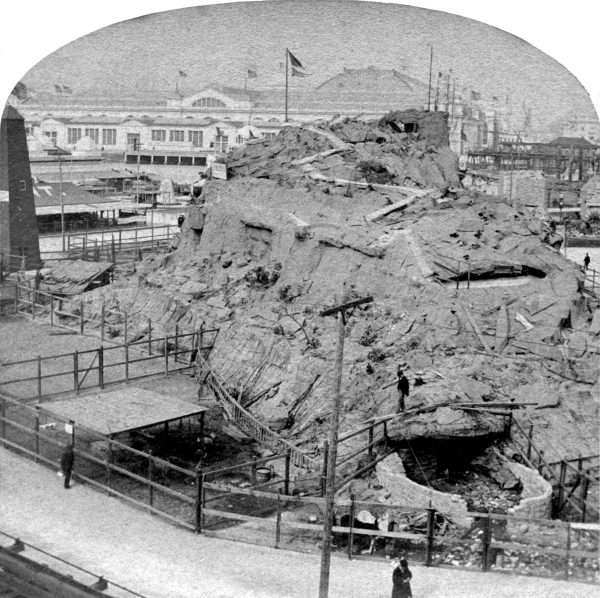
The Cliff-Dweller Exhibit at the 1893 World’s Columbian Exposition in Chicago contrasted with the buildings of the ‘Great White City’. It housed the Wetherill family’s large Mesa Verde collection.
After the fair ended, the Wetherill collection was transferred to the University of Pennsylvania where it resides today and is studied by scholars. It took about a decade for Holmes and others in the federal government to begin supporting the designation of Mesa Verde as a National Park, and it was not until 1906 that it was finally given that status. In the interim, uncontrolled visitation and excavations took their toll on the structures and cultural remains. Even more pernicious were the unjust policies toward the living Indians that the government philosophy was used to justify.
Powell’s assertion that “the creation of an artificial environment” is superior to “adaptation to environment” reflects a fundamental ideological position regarding the place of humans in the natural world. It is a social philosophy that asserts that the human destiny is to control nature. “In savagery, the powers of nature are feared as evil demons; in barbarism, the powers of nature are worshiped as gods; in civilization, the powers of nature are apprenticed servants,” Powell wrote.
The “propaganda of social ideas” that Powell and his contemporaries promoted had its desired effect, creating an entire society that believes, with a religious fervor, that the quest for artificiality is humanity’s highest goal. This belief has only intensified down through the years, until we have reached the current situation where many of the younger people hardly know that there is a natural environment out there. Ironically, “progress”, thought to be good, results in an ever-increasing psychological dependency on man-made things that our ancestors would not have conceived of nor felt a desire for.
The discord that we are seeing in our society is not between those who believe in an artificial environment versus those who believe in adaptation to environment. People who believe in the latter are a tiny minority and have little voice in any modern dialog. Rather, the debate is between various proponents of artificiality who disagree amongst themselves on how best to bring it to fullness. Dedication to artificiality is essentially the notion that it is possible and desirable to escape from or transcend nature. It is an impossible dream, since humans are part of nature and ultimately subject to its ways. There can be no lasting contentment in the pursuit of artificiality since its pleasures are only transitory, and it is not a genuine path to a hoped-for state of lasting bliss. Instead, its proponents argue and fight, blaming their disappointment in failing to achieve happiness on one another.
Those who learned to adapt to their natural environment—the cliff dwellers, their cultural kin, and a handful of newcomers—worked on changing their attitudes rather than changing their environments. Aspects of nature that are benign but at first distressful, such as wind, can be dealt with by self-discipline, keen observation of their wonders, and gratitude for their benefits. This is a simpler and healthier approach than avoidance, and it recognizes our ability to mature in our appreciation of the world around us by confronting our irrational fears rather than suppressing them. Environmental conditions that are truly dangerous we can learn to avoid. Those who follow this path have no need to engage in the incessant bickering and fighting with fellow human beings that has become the hallmark of our time.
More than thirty years ago, Harvey Leake began researching the history of his pioneering ancestors, the Wetherills of the Four Corners region. His investigations have taken him to libraries, archives, and the homes of family elders whose recollections, photographs, and memorabilia have brought the story to life. His field research has led him to remote trading post sites in the Navajo country and some of the routes used by his great-grandfather, John Wetherill, to access the intricate canyon country of the Colorado Plateau. Harvey was born and raised in Prescott, Arizona. He is a semi-retired electrical engineer.

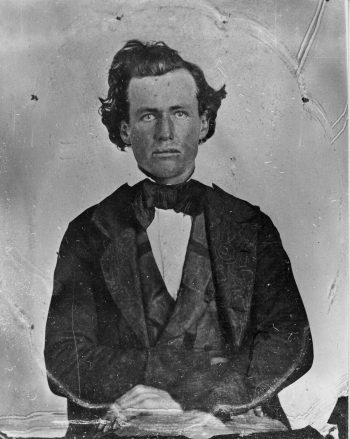
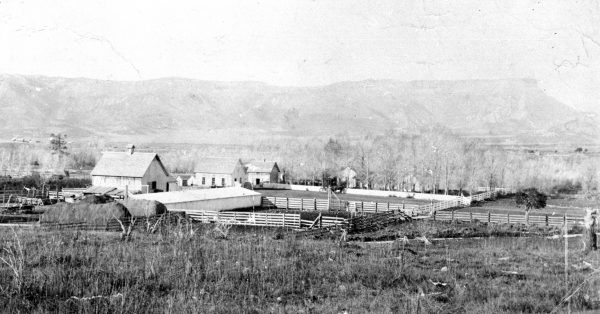

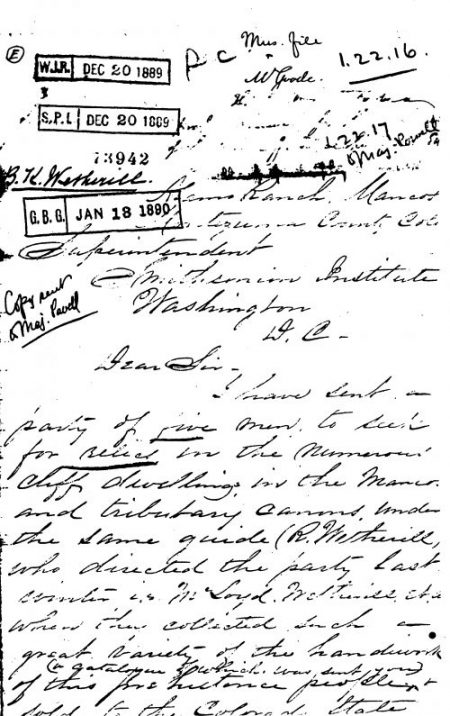

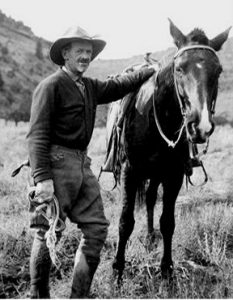






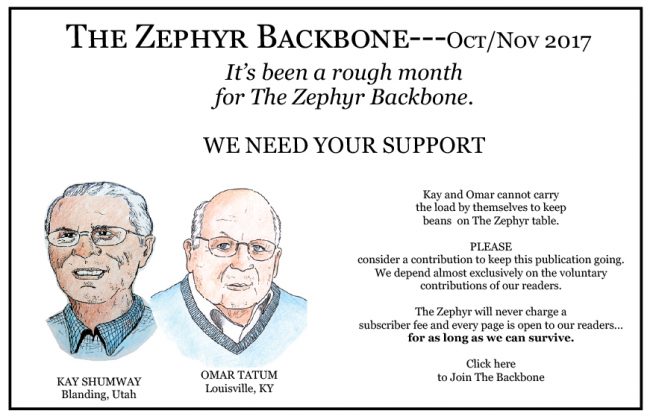

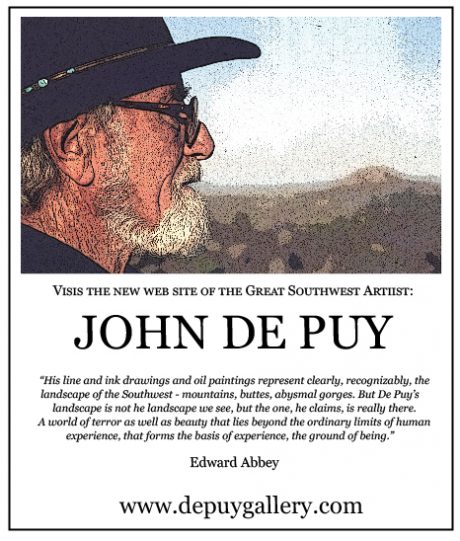
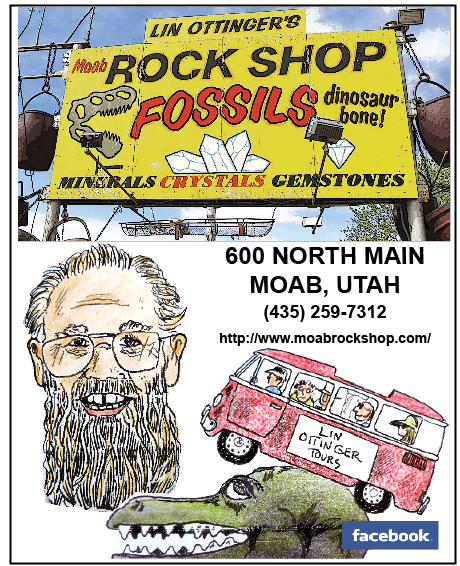
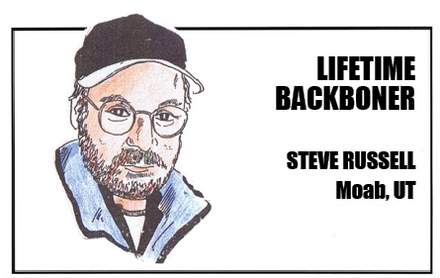
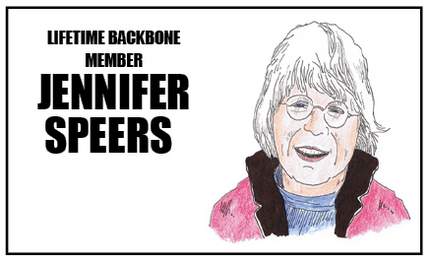
Interesting history and perceptive viewpoint.
Really enjoy the articles here, proud to know “my Prescott family”. Sherry Decker-Fairbanks, Alaska